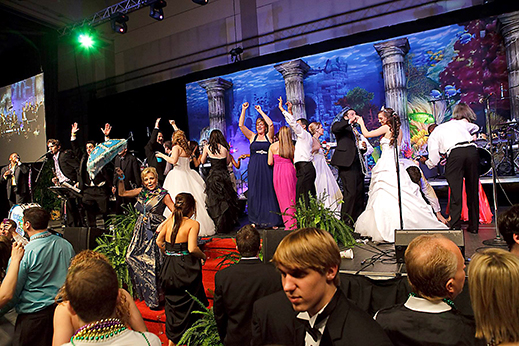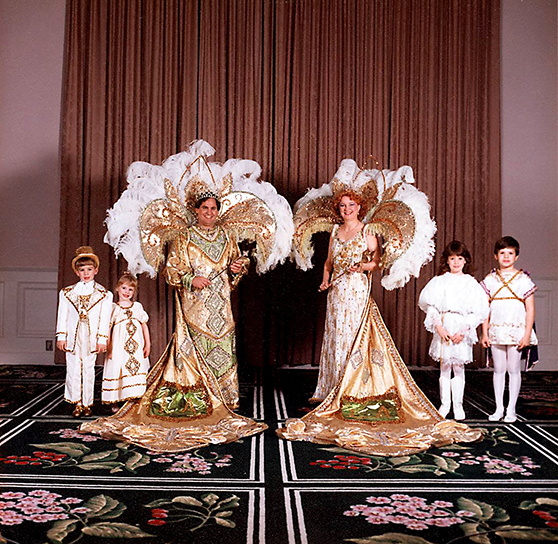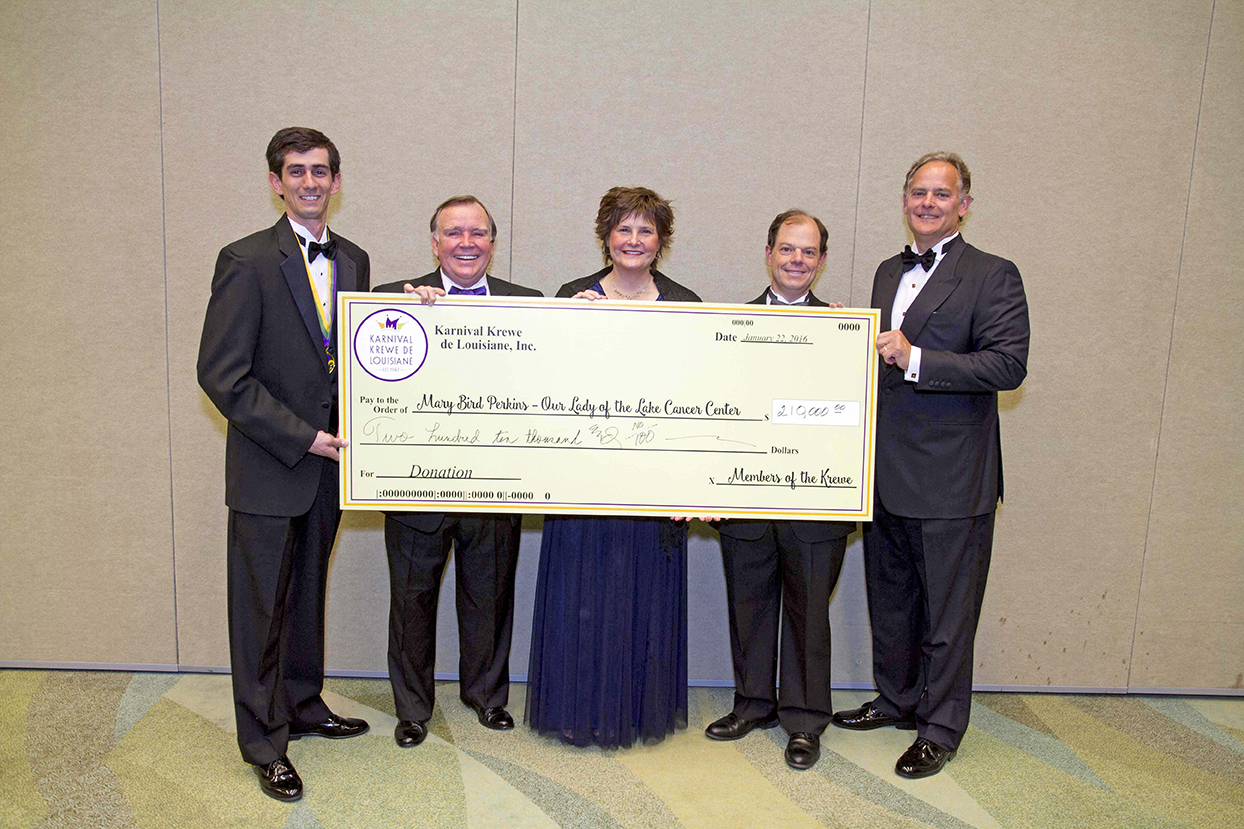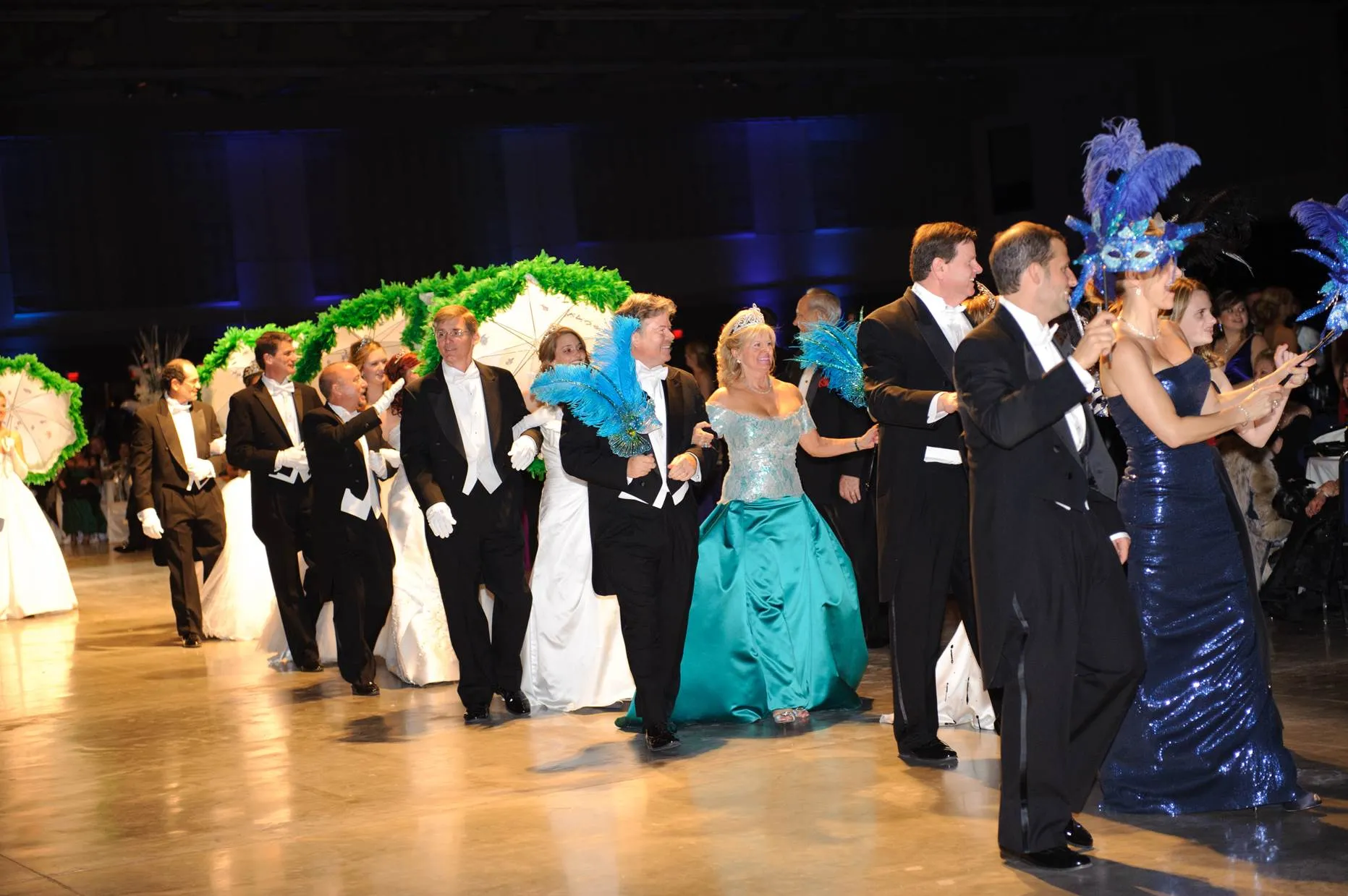Party with a purpose: Karnival Krewe de Louisiane
Sequined umbrellas, white handkerchiefs and purple, green and gold parasols bob in the air as hundreds make their way around the Baton Rouge River Center’s convention hall floor. At first glance, this might look like your traditional Mardi Gras celebration, but this second line of debutantes adorned in white, ladies in ball gowns and men in tuxes embodies much more than Louisiana’s carnival season.
For Karnival Krewe de Louisiane, this promenade and the subsequent indoor parade is the culmination of an annual yearlong effort to raise funds for Mary Bird Perkins—Our Lady of the Lake Cancer Center.

The only krewe of its kind, Karnival Krewe de Louisiane, is dedicated to supporting cancer research and patient care with funds raised year round through krewe membership dues, ball tickets and events like the Coronation Social, which features a silent auction and the introduction of the year’s royal court.
Packing the River Center to capacity with 1,500 attendees last year, the Karnival Krewe de Louisiane has come a long way since its first ball, originally called the Governor’s Mardi Gras Ball, in 1987.
In 30 years, the Krewe has managed to raise more than $2.9 million and hopes to surpass $3 million upon presenting an oversized check to cancer center officials at this year’s tableau and ball on February 3.
“I never in my wildest imagination dreamed it would ever be this big,” says Susan Lipsey, one of the krewe’s charter members and its first president.
Conceived out of a sense of service, the first seeds of what is now a hybrid nonprofit and Mardi Gras krewe can be traced back to the Lipseys and other longtime philanthropic families. According to oral history and best recollection of some of the krewe’s founding members, those involved in the beginning also include the likes of the Saurage and Reilly families and the late Dr. Jack Rathbone, a founding member of the cancer center and medical director of Our Lady of the Lake Regional Medical Center.
“The krewe was borne out of a group of people in Baton Rouge who wanted to volunteer their time and get together to celebrate one of Louisiana’s greatest traditions—Mardi Gras—and tie that into something else Louisianans love to do, and that is support each other and support our community,” says Lance Lemoine, a decade-long board member currently serving as past president.
For Richard and Susan Lipsey, the evolution of Mary Bird Perkins, along with the growth of the krewe, is woven into their family’s legacy. Anna B. Lipsey, Richard’s mother, was a founder of Mary Bird Perkins and was deeply passionate about the cause. Today, Susan and Richard carry on her work, having both served in numerous leadership positions on the cancer center board of directors and in various volunteer capacities.

“When I go in there, I just well up,” Susan Lipsey says. “I remember it before it was even born. When I think of Karnival Krewe de Louisiane and I go to that ball and they bring that check out for such a large sum of money every year, it just blows me away.”
Eric Lane, president of Gerry Lane Enterprises, recalls how his late father, Gerry Lane, supported the krewe early on, helping the organization weather trying financial times in the early ’90s.
“The economy was tough in 1991 and they were losing money,” Lane says. “That is how we became the major sponsor.” According to Lane, his father guaranteed enough money to put the krewe on sound financial footing going into the next ball. Twenty-five years later, Gerry Lane Enterprises remains Karnival Krewe de Louisiane’s presenting sponsor.
“He always saw the value of having a cancer research and treatment facility in your own local area,” Lane says of his father. “And it is amazing how, after all those years, all the money Dad was raising for cancer research ended up helping him. They treated him over at Mary Bird and extended his life by three and a half years.”
For Lane, the sense of community and the support system that has developed over the years among the 200-plus members of the krewe made all the difference as his father battled the disease.
“I went with him for many of his treatments to Mary Bird,” he says. “It was so comforting to see the same faces of people I would see at the ball there treating my father.”
With the loss of his father and other family members to cancer, Lane and his family continue their annual support of the krewe.

With this year’s theme of “30 Years and Still Having a Ball,” Eric Lane’s wife Lisa will reign as queen. “My mother’s been queen, my sister’s been queen, my daughter has been a debutante; I was king on the 25th anniversary, so it is pretty special that my wife is queen on the 30th anniversary this year,” Lane says.
Lemoine, who lost his first wife to cancer after 10 years of marriage, has worked with the rest of the Karnival Krewe de Louisiane board over the past few years to prioritize educating krewe members and the royal court about the cause they’re supporting.
“We are trying to get them more involved in the concept of what they are representing when they participate in this,” Lemoine says.
That is why the krewe instituted fundraising initiatives for the debutantes and events like the Tea and Tour, during which the royal court visits Mary Bird Perkins.
“It really makes it real to see what people are going through to try to fight this disease,” Lemoine says. “This is the ‘why’ behind it all. It is not just a party.”
Though the concept of throwing such a large party with an equally large purpose is the secret to the krewe’s success.
“We want to make our krewe about our ball, primarily because we feel that if we have the best Mardi Gras ball in Baton Rouge, we are ultimately going to achieve our goal of helping people who have cancer,” Lemoine says.
Past president, former treasurer and longtime board member Jill Vanlangendonck says the focus is always on that end goal.
“We can have a wonderful Mardi Gras and have a wonderful ball complete with a parade, the bands and all of the Carnival tradition, knowing that at the end of the day, your funds are not just there for that,” Vanlangendonck says. “They are going someplace much bigger than all of us.”












